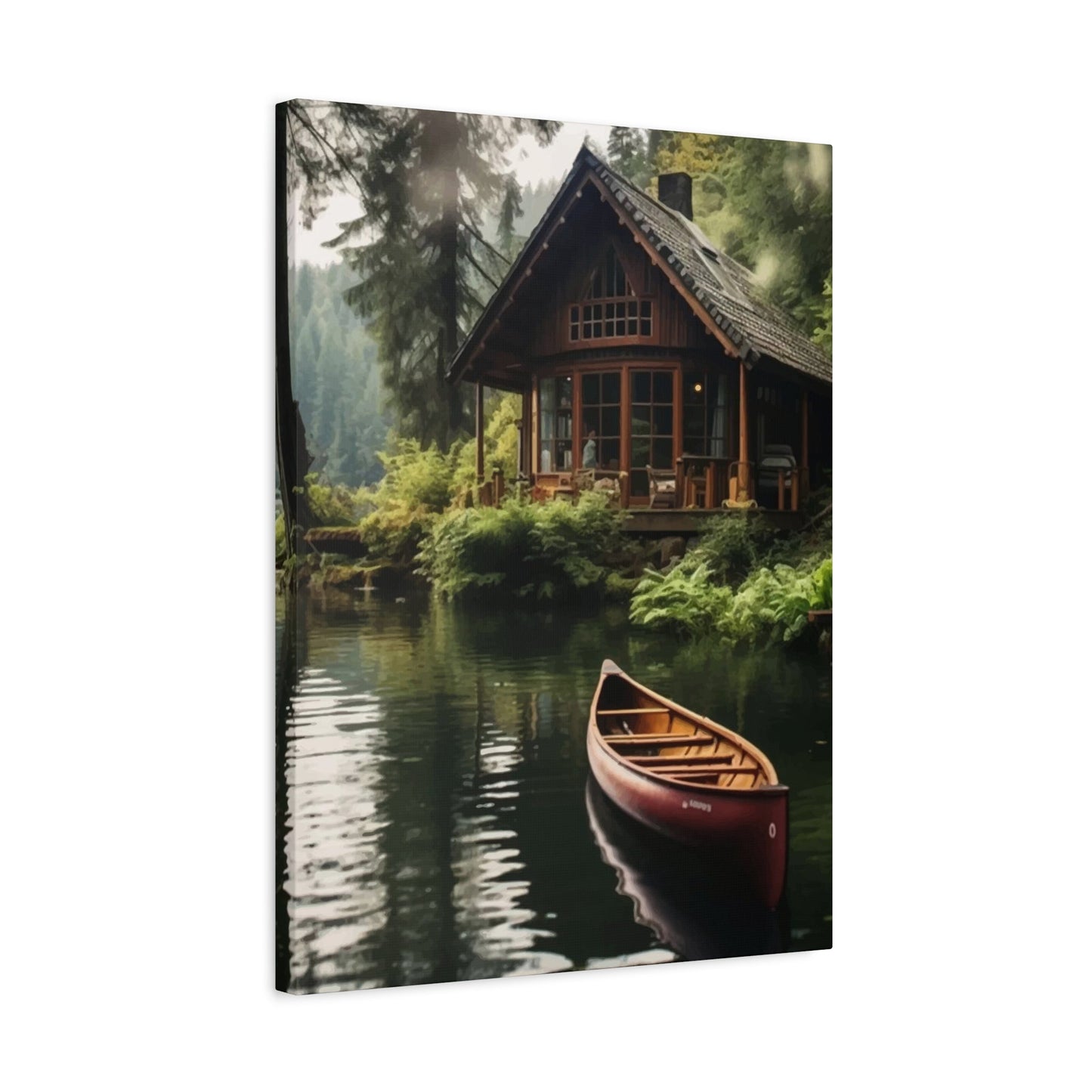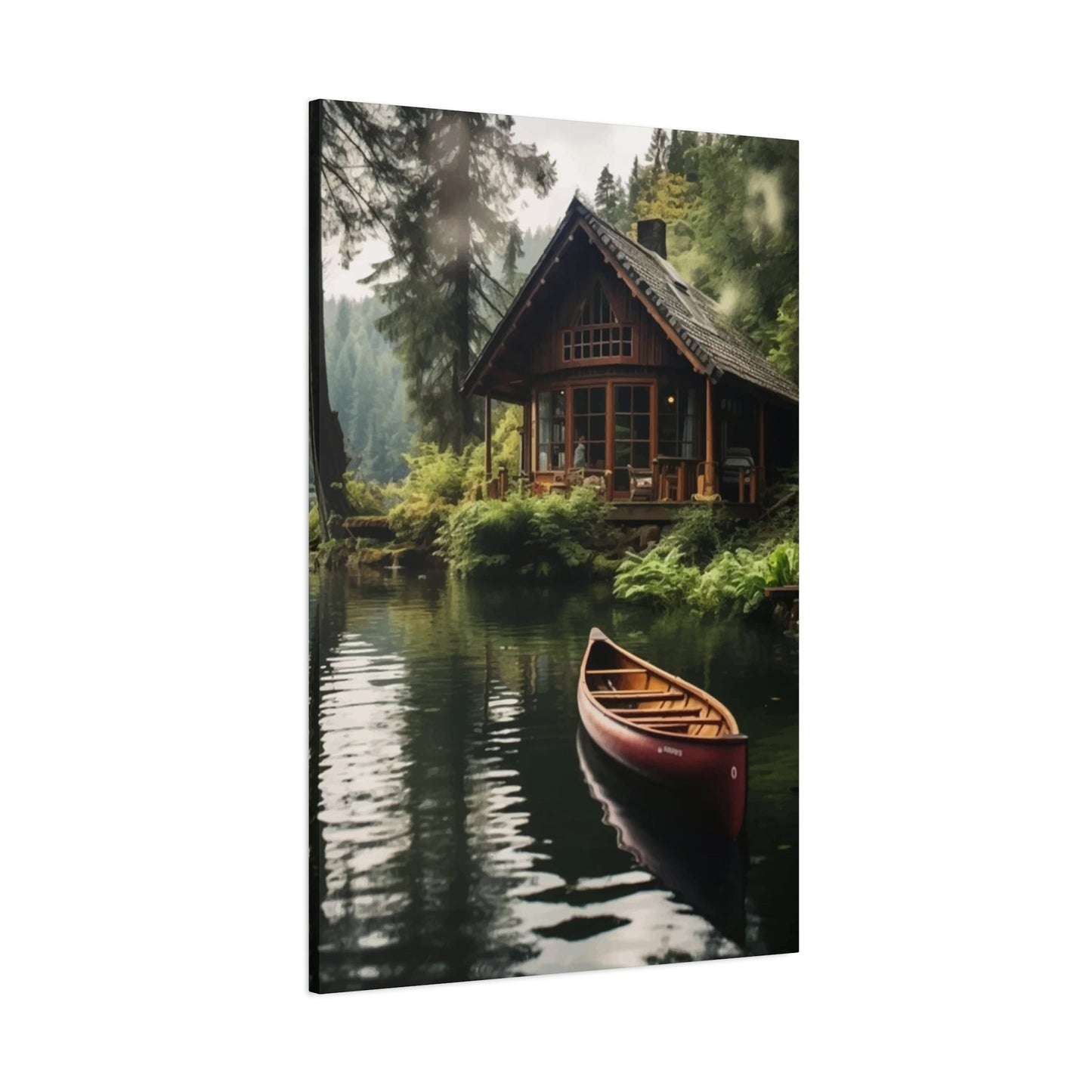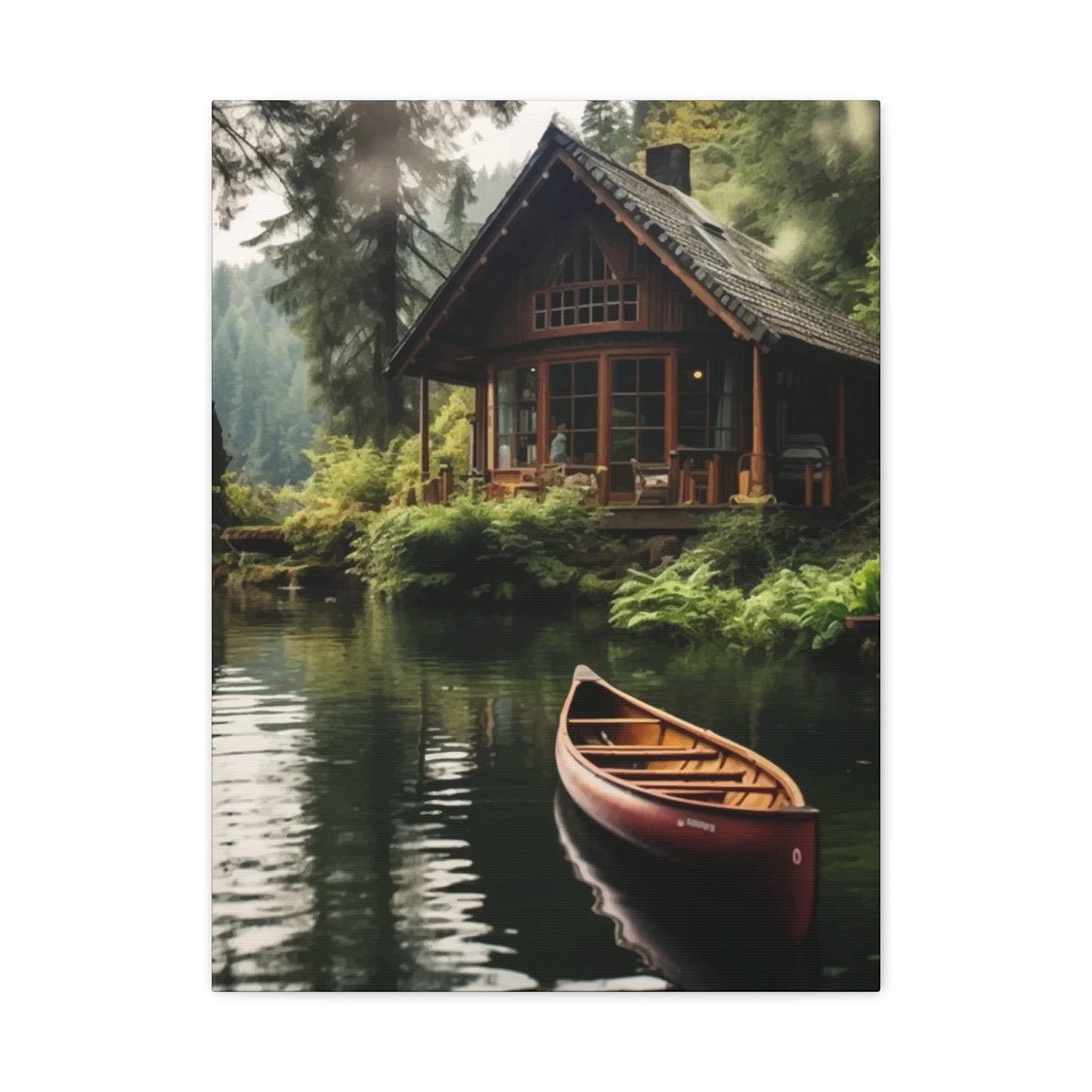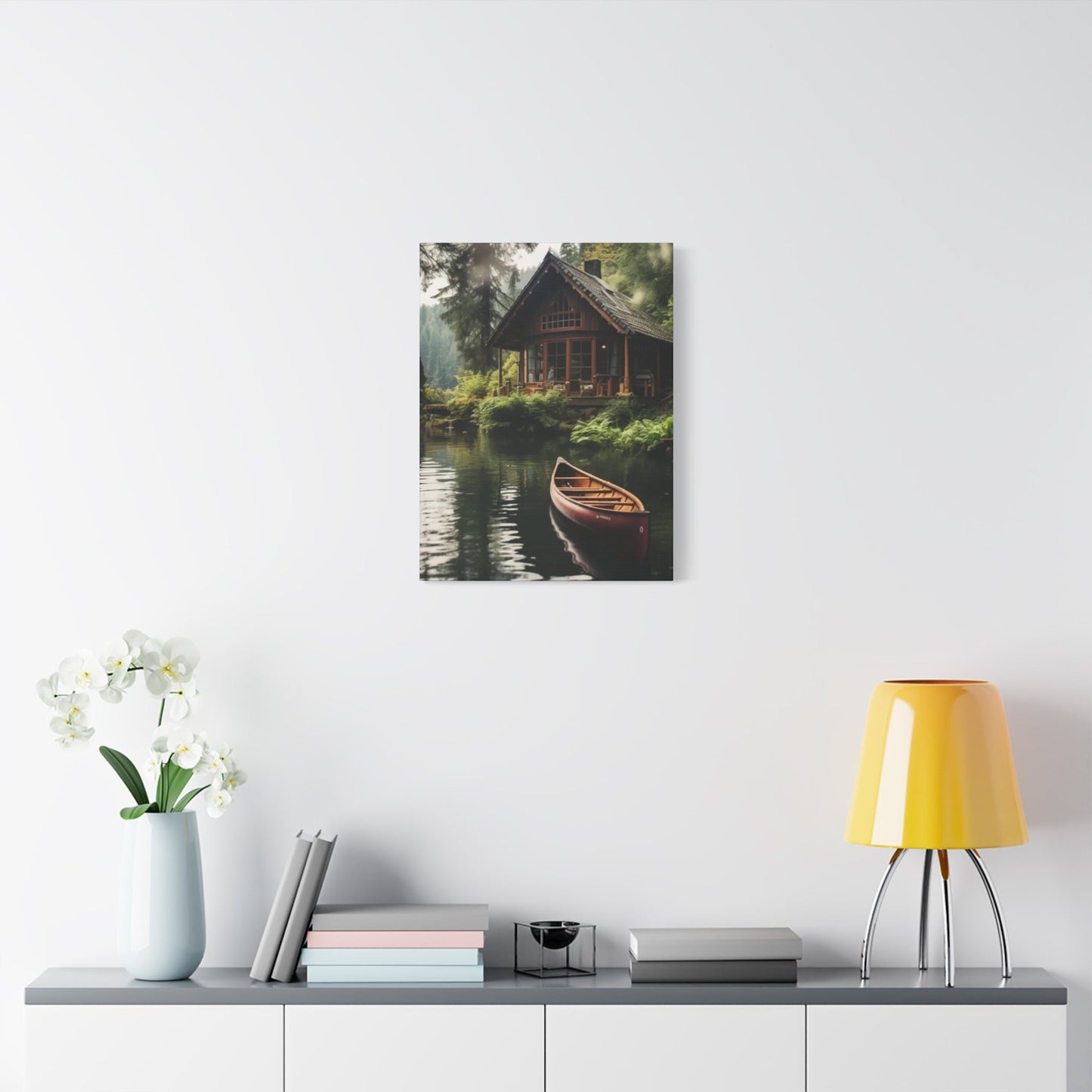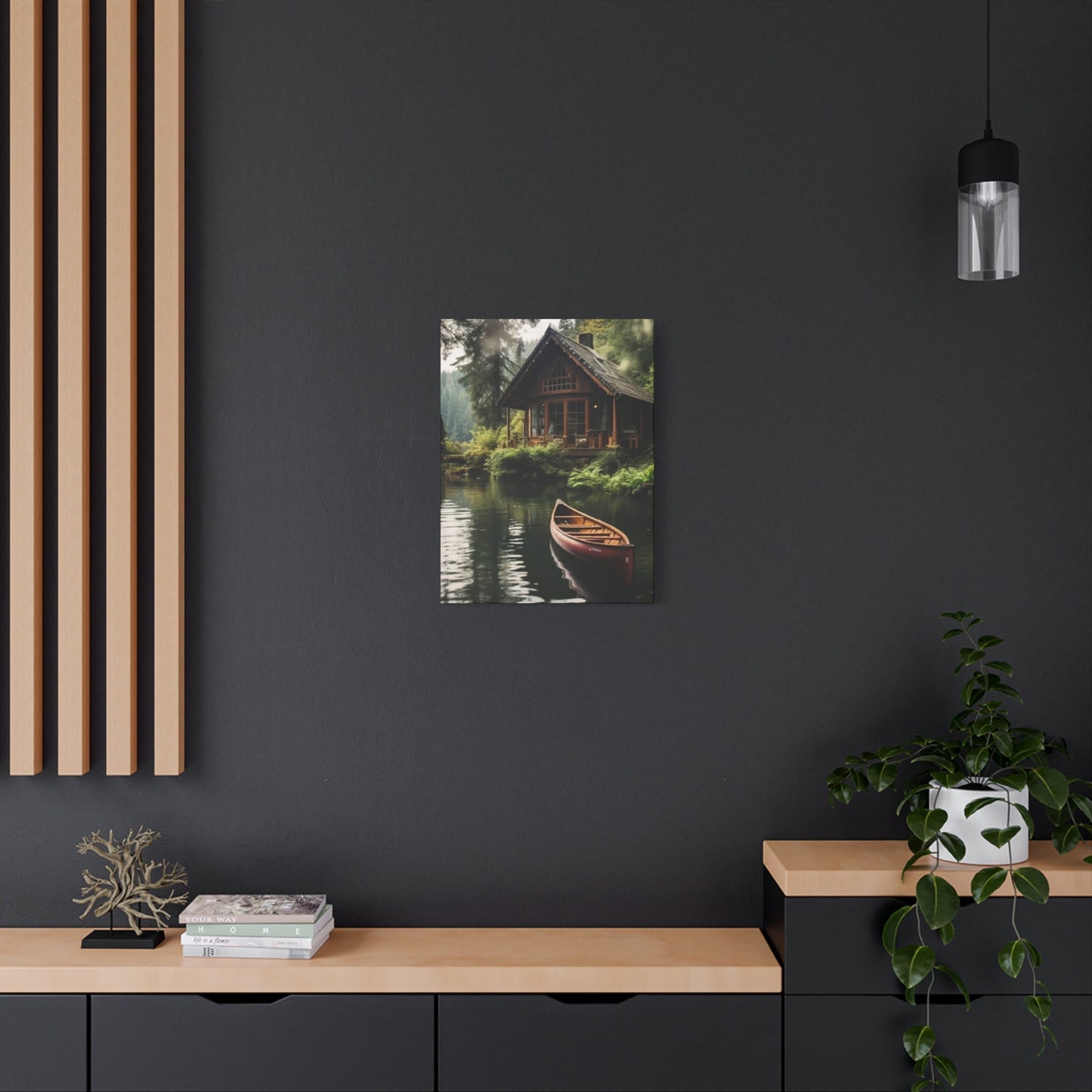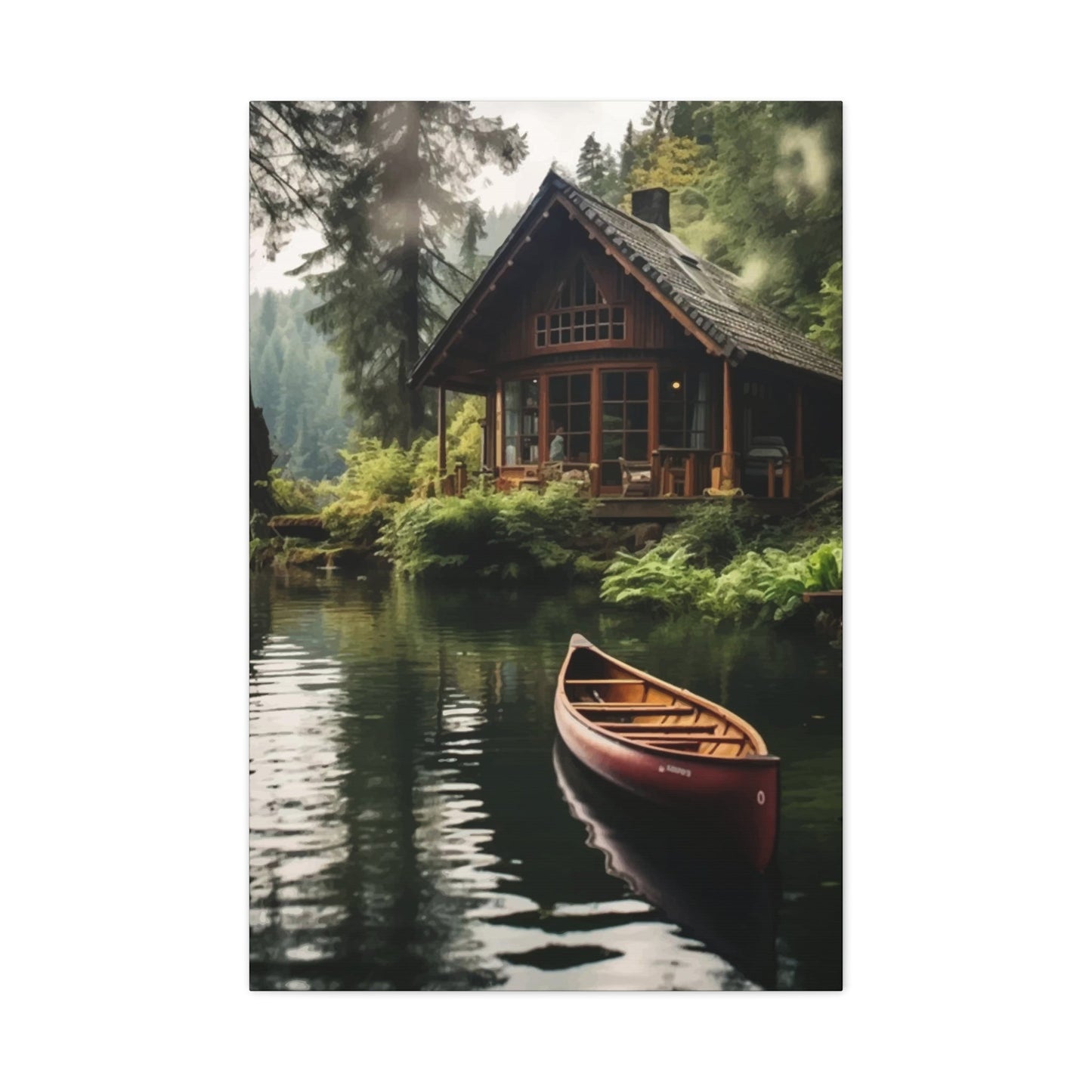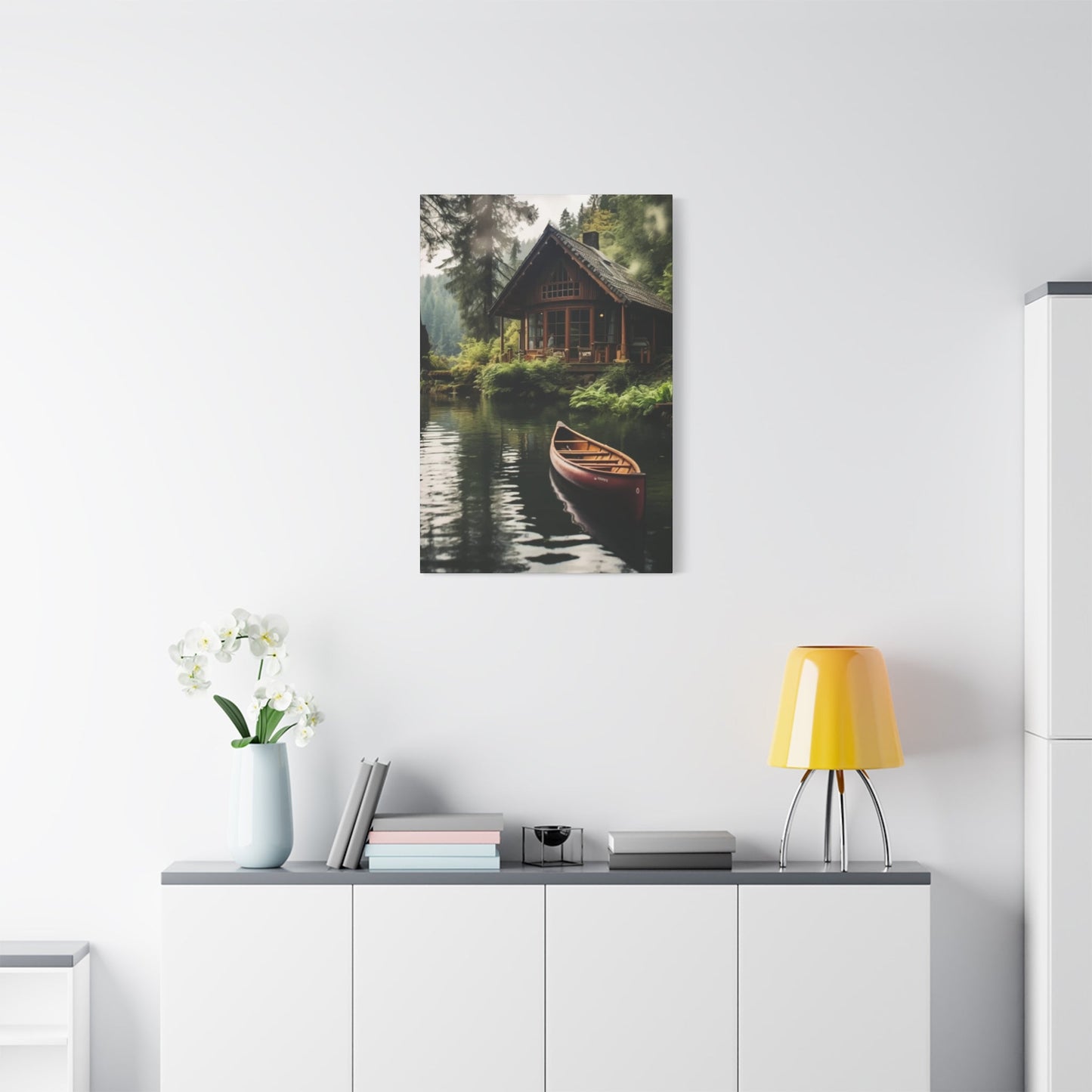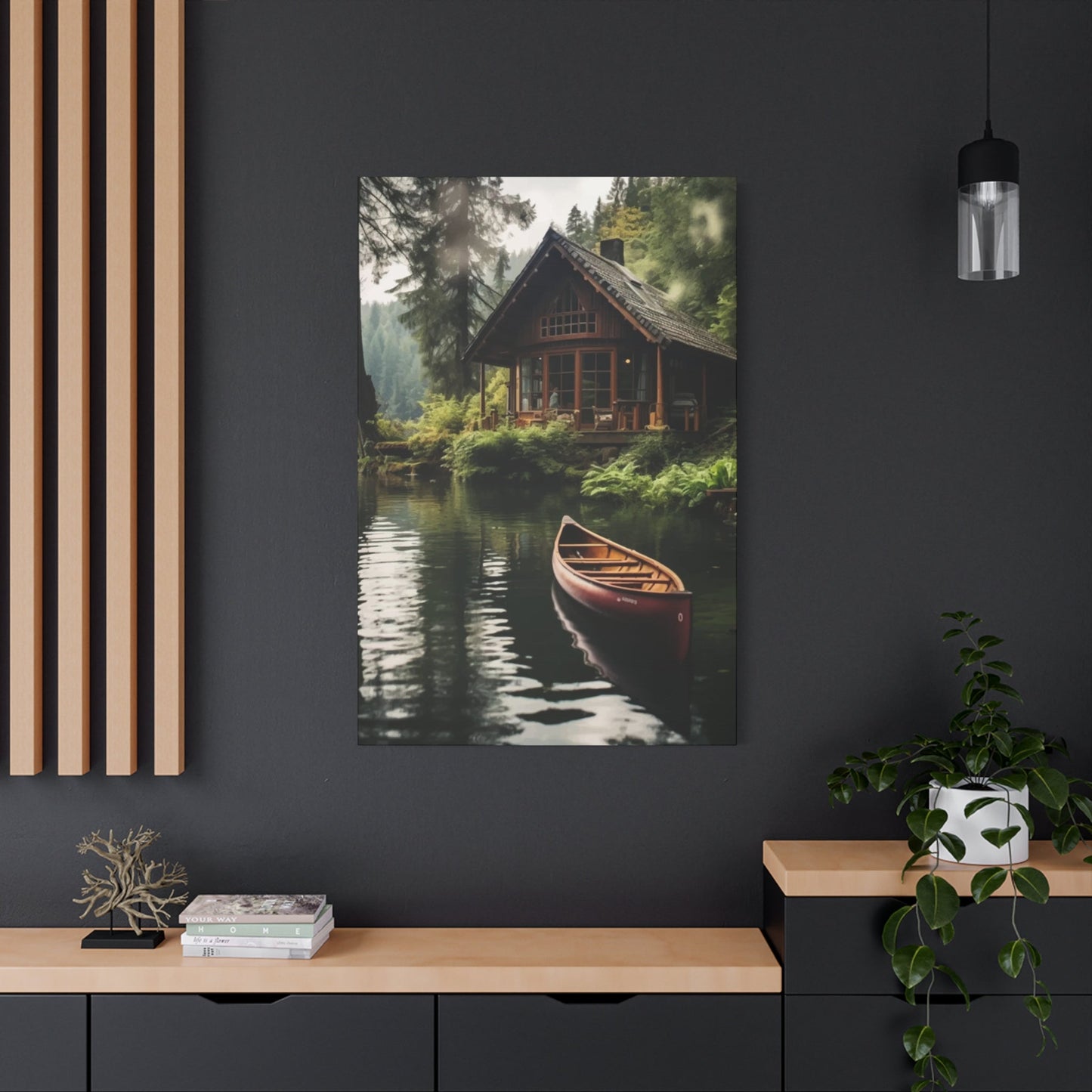Decorating with Lakes Wall Art: Tips for a Peaceful Vibe
The serene allure of lakes has long captivated artists, offering an endless source of inspiration that transcends time and style. For centuries, painters, photographers, and digital artists alike have sought to capture the tranquil essence of lakes—their stillness, their reflective qualities, and the subtle play of light and shadow that transforms them with each passing moment. Whether it’s the ethereal morning mist that gently hovers over a glassy surface, the vivid hues of a sunset mirrored in gentle ripples, or the quiet solitude evoked by secluded shorelines, lake-themed artwork carries a unique power to evoke calm and contemplation.
This deep connection between lakes and artistic expression has produced countless masterpieces that grace galleries, public spaces, and private homes around the world. Each piece invites viewers to pause, breathe, and connect with the natural world’s serene beauty. Beyond simple decoration, lake art serves as a visual sanctuary—transforming interiors into tranquil retreats that soothe the mind and spirit.
In this comprehensive guide, we explore the rich tradition of aquatic artistry and how it continues to inspire contemporary creators today. We’ll examine how lakes have been interpreted across different mediums and artistic movements, revealing the enduring fascination with these peaceful bodies of water. More importantly, we’ll share practical tips for incorporating lake-themed wall art into your own space, helping you craft an environment imbued with harmony and relaxation.
From selecting the perfect color palettes that complement your décor to choosing artwork that enhances natural light and promotes a sense of balance, this guide will equip you with ideas to bring the peaceful vibe of lakes into your home. Whether you prefer classic landscapes, modern abstracts, or photographic prints, lake wall art offers a timeless and versatile way to infuse your living space with calm, beauty, and a touch of nature’s quiet magic.
Stunning Lake Landscapes in Art History
The portrayal of lake environments in artistic works spans millennia, beginning with ancient civilizations that revered these natural water bodies as sacred entities. Early Egyptian tomb paintings frequently depicted the Nile's tributaries and associated lakes, incorporating them into religious narratives that emphasized the afterlife's peaceful nature. These early representations established a foundation for future artistic interpretations of aquatic environments.
During the Renaissance period, lake depictions evolved significantly as artists developed more sophisticated techniques for capturing water's complex visual properties. Masters like Leonardo da Vinci incorporated detailed lake backgrounds into portraits, understanding that these serene backdrops enhanced the overall composition's emotional depth. The sfumato technique, which da Vinci pioneered, proved particularly effective for rendering the subtle atmospheric effects surrounding lake environments.
The Romantic movement of the late 18th and early 19th centuries elevated lake imagery to unprecedented artistic heights. Artists during this period viewed lakes as sublime manifestations of nature's power and beauty, capable of evoking profound emotional responses in viewers. Caspar David Friedrich's haunting lake scenes exemplified this approach, featuring solitary figures contemplating vast aquatic expanses that seemed to extend beyond the canvas's physical boundaries.
European lake regions, particularly those in Switzerland and the English Lake District, became pilgrimage destinations for artists seeking inspiration. The pristine alpine lakes, surrounded by towering peaks and reflected in crystal-clear waters, provided endless compositional possibilities. These locations fostered artistic communities where painters could exchange techniques and philosophical approaches to landscape representation.
The Hudson River School in America similarly elevated lake imagery to iconic status during the mid-19th century. Artists like Thomas Cole and Frederic Edwin Church created monumental canvases depicting American lakes with unprecedented detail and emotional intensity. Their works celebrated the continent's untamed wilderness while simultaneously expressing concerns about industrialization's impact on natural environments.
Victorian-era artists embraced lake themes as symbols of domestic tranquility and moral purity. These depictions often featured families enjoying leisurely activities beside peaceful waters, reinforcing social ideals about harmonious relationships between humans and nature. Such paintings adorned middle-class homes, serving both decorative and educational purposes by promoting appreciation for natural beauty.
The Pre-Raphaelite Brotherhood revolutionized lake imagery through their meticulous attention to botanical and geological accuracy. Their paintings featured exhaustive detail in depicting lakeside vegetation, rock formations, and water surface textures. This scientific approach to artistic representation influenced subsequent generations of landscape painters who valued empirical observation alongside creative interpretation.
Academic art traditions of the late 19th century codified specific approaches to lake painting, establishing compositional rules and color theories that students learned systematically. These educational frameworks ensured consistent quality in lake depictions while simultaneously limiting creative experimentation. However, this period's technical achievements in representing water's optical properties remain influential today.
How Artists Capture the Serenity of Lakes
Capturing lake serenity requires artists to master subtle visual elements that contribute to peaceful atmospheric effects. The interplay between light and water creates constantly shifting patterns that challenge even experienced painters to represent convincingly. Understanding these technical aspects enables artists to translate the meditative qualities of actual lake experiences into compelling visual compositions.
Color temperature plays a crucial role in conveying tranquil lake atmospheres. Cool blues and greens dominate most serene lake scenes, as these hues naturally suggest calmness and emotional stability. Artists manipulate these color relationships through careful observation of how different lighting conditions affect water's apparent coloration throughout daily and seasonal cycles.
Atmospheric perspective techniques help create depth while maintaining the gentle, enveloping quality characteristic of peaceful lake environments. By gradually reducing contrast and color saturation in distant elements, artists can suggest vast aquatic expanses without overwhelming viewers with excessive visual information. This approach mirrors how human perception naturally processes tranquil environments.
Brushwork quality significantly impacts a lake painting's emotional resonance. Smooth, flowing strokes that follow water's natural movement patterns enhance the sense of liquid fluidity, while harsh or aggressive mark-making disrupts the peaceful mood. Master artists develop signature approaches to brushwork that become recognizable elements of their personal style.
Compositional balance in serene lake scenes typically avoids dramatic focal points that might create visual tension. Instead, artists distribute visual weight evenly across the canvas, encouraging viewers to absorb the entire composition gradually rather than focusing on specific elements. This approach reflects the meditative experience of actually observing peaceful lake environments.
The treatment of edges between different compositional elements affects perceived tranquility levels. Soft, blended transitions between sky and water, or between shoreline vegetation and aquatic surfaces, contribute to overall harmony. Sharp edges, while sometimes necessary for structural clarity, require careful consideration to avoid disrupting the peaceful atmosphere.
Reflections present unique opportunities for expressing lake serenity through doubled imagery that creates visual rhythms across the composition. Artists must balance accuracy in reflection depiction with the need to maintain overall tonal harmony. Subtle variations between reflected images and their sources add authenticity without destroying the peaceful mood.
Scale relationships between human figures and lake environments can enhance or diminish perceived serenity. Small human elements within vast aquatic landscapes emphasize nature's overwhelming scale, potentially evoking sublime rather than peaceful responses. Conversely, appropriately sized figures can suggest comfortable coexistence between humans and natural environments.
Seasonal considerations affect how artists approach serene lake depictions. Spring scenes might emphasize fresh greens and gentle warming light, while autumn representations could feature golden reflections and misty morning effects. Each seasonal approach requires different technical strategies for maintaining the fundamental peaceful character while expressing temporal specificity.
Famous Paintings Inspired by Lakes
Throughout art history, numerous masterpieces have immortalized lake environments, creating iconic images that continue influencing contemporary artistic expression. These celebrated works demonstrate various approaches to aquatic representation while establishing aesthetic standards that subsequent generations of artists reference and reinterpret.
Claude Monet's series of water lily paintings, created at his Giverny garden pond, revolutionized how artists conceptualized lake imagery. Rather than depicting expansive natural lakes, Monet focused intensively on a small artificial water feature, discovering infinite compositional possibilities within confined aquatic parameters. His innovative approach emphasized color interaction and atmospheric effects over geographical accuracy.
The impressionist master's technique involved applying paint in distinct strokes that optically blend when viewed from appropriate distances. This method proved particularly effective for capturing the shimmering quality of light dancing on water surfaces. Monet's water lily series demonstrates how concentrated observation of limited aquatic subjects can yield profound artistic insights.
John Constable's "The Hay Wain" features a mill pond that serves as the composition's emotional center. While not technically depicting a natural lake, this painting established influential precedents for representing peaceful water bodies within pastoral contexts. Constable's meticulous attention to atmospheric conditions and their effects on water surfaces influenced countless subsequent landscape painters.
The British artist's innovative use of white paint to suggest light reflections on water created luminous effects that seemed to glow from within the canvas. This technique required careful consideration of paint consistency and application timing to achieve the desired optical results. Constable's technical innovations remain relevant for contemporary artists working in traditional media.
Thomas Cole's "Lake with Dead Trees" exemplifies the American Romantic movement's approach to lake imagery. This painting combines sublime natural beauty with subtle suggestions of environmental mortality, reflecting 19th-century concerns about industrialization's impact on pristine wilderness areas. Cole's work demonstrates how lake scenes can carry complex philosophical and social messages.
The Hudson River School's emphasis on detailed geological and botanical accuracy required extensive field studies and preliminary sketches. Artists would spend weeks in remote locations, documenting specific rock formations, vegetation patterns, and atmospheric conditions that characterized particular lake environments. This empirical approach ensured that finished paintings conveyed authentic sense of place.
Winslow Homer's lake fishing scenes capture the recreational aspects of aquatic environments while maintaining focus on natural beauty and human interaction with water bodies. His paintings demonstrate how genre scenes can incorporate landscape elements without sacrificing either narrative clarity or environmental authenticity. Homer's technical skill in representing water in various states of motion established him as a master of aquatic painting.
The American artist's innovative use of watercolor media for serious landscape subjects challenged traditional hierarchies that privileged oil painting over other techniques. His transparent washes perfectly captured the luminous quality of light filtering through water, creating effects impossible to achieve with opaque pigments. Homer's watercolor innovations expanded possibilities for contemporary aquatic representation.
Albert Bierstadt's monumental lake scenes of the American West introduced European audiences to previously unknown aquatic environments. His paintings combined topographical accuracy with romantic sensibility, creating images that served both documentary and aesthetic purposes. Bierstadt's work contributed to growing appreciation for American wilderness areas during the nation's westward expansion period.
Modern Interpretations of Lakes in Art
Contemporary artists continue exploring lake themes through diverse media and conceptual approaches that reflect current cultural concerns and technological possibilities. Modern interpretations often address environmental issues, psychological states, and social relationships with natural resources while maintaining connections to traditional landscape painting conventions.
Digital artists create virtual lake environments that exist only in electronic form, challenging traditional definitions of landscape representation. These computer-generated images can incorporate impossible lighting conditions, gravity-defying water behaviors, and fantastical color combinations while maintaining recognizable aquatic characteristics. Digital lake art explores the boundaries between natural observation and creative imagination.
Installation artists construct immersive lake experiences within gallery environments, using projection technology, sound design, and physical materials to simulate aquatic atmospheres. These works engage multiple sensory modalities simultaneously, creating more complete environmental experiences than traditional two-dimensional representations can achieve. Visitors become active participants rather than passive observers.
Video artists document actual lake environments over extended time periods, capturing seasonal changes, weather patterns, and human interactions that static paintings cannot convey. Time-based media reveals lakes as dynamic systems rather than frozen moments, offering insights into environmental processes that occur beyond human perception scales. These works often address climate change and ecological preservation themes.
Mixed media artists combine traditional painting techniques with photography, collage, and three-dimensional elements to create hybrid lake representations. These works might incorporate actual water, sand, or vegetation collected from specific lake locations, creating direct physical connections between artwork and source environments. Such approaches blur boundaries between representation and reality.
Abstract artists extract essential visual elements from lake environments, creating non-representational compositions that evoke aquatic experiences without depicting recognizable forms. Color relationships, gestural marks, and compositional rhythms become primary vehicles for expressing emotional and sensory responses to lake encounters. Abstract lake art emphasizes universal rather than specific experiential aspects.
Environmental artists work directly with actual lake environments, creating temporary interventions that comment on ecological relationships and human impact. These projects might involve floating sculptural elements, temporary shoreline modifications, or collaborative projects with local communities. Such works address lakes as living systems rather than aesthetic subjects.
Photorealistic painters apply traditional techniques to create highly detailed lake depictions that compete with photographic accuracy. This approach often involves hundreds of hours of meticulous work to achieve convincing illusions of three-dimensional aquatic environments on flat surfaces. Photorealism demonstrates continued relevance of traditional skills in contemporary contexts.
Conceptual artists use lake imagery as vehicles for exploring broader philosophical and social issues. Their works might examine ownership rights to water resources, cultural meanings of aquatic environments, or psychological associations with specific lake locations. Conceptual lake art prioritizes intellectual engagement over aesthetic pleasure.
Street artists and muralists bring lake imagery into urban environments, creating large-scale public works that introduce natural beauty into artificially constructed settings. These projects often involve community participation and educational components that promote environmental awareness. Urban lake murals demonstrate art's potential for social and ecological advocacy.
Using Color to Depict Lake Reflections
Mastering color relationships in lake reflections requires understanding complex optical phenomena and developing technical skills to translate these visual experiences into convincing artistic representations. The interplay between direct lighting, atmospheric conditions, and water surface characteristics creates constantly changing color situations that challenge even experienced artists.
Primary reflection colors often appear darker and more saturated than their source objects due to water's light-absorbing properties and surface angle relationships. Artists must adjust their color mixing accordingly, avoiding the common mistake of making reflections too bright or too similar to their sources. Subtle darkening and increased color intensity create more convincing illusions of actual water behavior.
Atmospheric perspective affects reflections differently than direct objects, as reflected light must travel additional distances through air layers of varying density and moisture content. This phenomenon requires artists to modify color temperature and saturation in reflection areas, typically cooling and muting colors progressively with increased distance from the viewer's position.
Water surface texture dramatically influences reflection appearance, with smooth surfaces creating mirror-like effects while disturbed waters fragment reflected images into impressionistic color patterns. Artists must decide how much surface disturbance to include in their compositions, balancing realistic observation with aesthetic considerations that serve overall artistic goals.
Color temperature shifts throughout daily lighting cycles create opportunities for dramatic reflection effects that can become focal points within lake compositions. Morning and evening light produce warm color casts that contrast beautifully with cooler water tones, while midday illumination creates more neutral color relationships that require subtle handling to maintain visual interest.
Complementary color relationships between sky and water often dominate lake compositions, with blue water surfaces providing ideal backgrounds for warm-colored cloud reflections. Understanding these natural color harmonies enables artists to enhance compositional unity while maintaining realistic representation of actual environmental conditions.
Local color influences from surrounding landscape elements affect reflection appearance through secondary lighting effects and color contamination. Green vegetation reflects light onto nearby water surfaces, creating subtle color shifts that add authenticity to lake depictions. Artists must observe these influences carefully to achieve convincing environmental integration.
Pigment selection plays crucial roles in achieving authentic reflection colors, as certain paint formulations better simulate the optical properties of water-transmitted light. Transparent pigments often work more effectively for reflection areas than opaque alternatives, allowing underlying color layers to contribute to final visual effects through optical mixing rather than simple color coverage.
Brushwork direction can enhance the illusion of water movement within reflection areas, with horizontal strokes suggesting gentle surface ripples while vertical marks imply deeper water disturbances. The relationship between brushwork patterns in reflection areas and source objects requires careful coordination to maintain visual coherence across compositional elements.
Seasonal color variations in lake reflections provide opportunities for exploring different emotional moods and atmospheric conditions. Spring reflections might emphasize fresh green tones and clear atmospheric effects, while autumn scenes could feature warm golden colors and hazy lighting conditions that create entirely different visual experiences.
The Symbolism of Lakes in Different Cultures
Across diverse cultural traditions, lakes carry profound symbolic meanings that extend far beyond their physical characteristics, embodying spiritual concepts, emotional states, and social values that artists incorporate into their work. Understanding these cultural dimensions enriches appreciation for lake-themed artworks while revealing universal human responses to aquatic environments.
Ancient Celtic traditions viewed lakes as sacred portals to otherworldly realms, believing these water bodies served as gathering places for supernatural beings and repositories for magical objects. Celtic artists incorporated lake imagery into ritual objects and decorative arts, using flowing water patterns and aquatic creatures to suggest connections between earthly and spiritual dimensions.
Many Celtic legends describe weapons, treasures, and sacred objects being cast into lakes for safekeeping or as offerings to divine powers. These stories influenced medieval artistic traditions that depicted lakes as mysterious, powerful entities capable of concealing profound secrets. Arthurian legends, with their famous lake-dwelling Lady of the Lake, exemplify this cultural interpretation.
In Buddhist philosophy, lakes symbolize mental clarity and spiritual purification, representing the mind's potential for achieving peaceful, reflective states free from emotional turbulence. Buddhist artists traditionally depicted enlightened beings beside tranquil water bodies, using lake imagery to suggest achieved spiritual development and inner harmony.
The concept of mirror-like water surfaces reflecting true reality without distortion appears frequently in Buddhist art and literature. This symbolism influenced landscape artists working within Buddhist cultural contexts, who emphasized lake paintings' meditative qualities and their capacity for inducing contemplative mental states in viewers.
Hindu traditions associate lakes with feminine divine energy and creative life forces, viewing these water bodies as manifestations of goddess power and fertility. Sacred lakes throughout India serve as pilgrimage destinations where devotees perform purification rituals and seek spiritual blessing. Hindu artists incorporate lake imagery into religious artworks celebrating divine feminine attributes.
The lotus flower's symbolic significance in Hindu and Buddhist traditions connects directly to lake environments, as these plants naturally grow in shallow water bodies. Artists working within these cultural frameworks often feature lotus-adorned lakes as symbols of spiritual awakening and divine beauty emerging from mundane material conditions.
Native American traditions generally view lakes as living entities with consciousness and power, deserving respect and careful stewardship rather than exploitation. Many tribal cultures maintain specific protocols for interacting with lake environments, believing improper behavior toward water bodies can result in spiritual consequences. Native artists often incorporate these beliefs into contemporary works addressing environmental preservation.
Dreamtime stories from Australian Aboriginal cultures describe lakes' creation through ancestral spirit activities, connecting these water bodies directly to cosmic creation narratives and ongoing spiritual presence in the landscape. Aboriginal artists continue depicting these sacred geography through traditional techniques and contemporary adaptations that maintain cultural authenticity while engaging modern audiences.
Chinese artistic traditions associate lakes with scholarly contemplation and refined aesthetic appreciation, viewing these environments as ideal settings for poetic inspiration and philosophical reflection. Classical Chinese paintings frequently feature scholars or hermits beside mountain lakes, suggesting harmony between human intellectual achievement and natural beauty.
European romantic traditions elevated lakes to symbols of sublime natural power capable of overwhelming human consciousness with their beauty and mystery. This cultural interpretation influenced countless artistic works that depicted lakes as awesome, potentially dangerous entities that nonetheless attracted human fascination and reverence.
Techniques for Painting Water and Lakes
Mastering aquatic painting techniques requires understanding water's unique visual properties and developing specialized skills for representing this challenging subject matter convincingly. Lakes present particular difficulties due to their scale, reflection complexity, and atmospheric integration requirements that demand both technical proficiency and aesthetic sensitivity.
Underpainting strategies for lake scenes typically begin with establishing broad tonal relationships between sky, water, and surrounding landscape elements. Many artists prefer working from dark to light, building up luminous water effects through successive transparent glazes rather than attempting to achieve final colors in single applications. This approach allows for subtle color adjustments throughout the painting process.
Brush selection significantly impacts water painting success, with different brush types serving specific functions in creating convincing aquatic illusions. Flat brushes work effectively for broad water surface areas and horizontal reflection bands, while liner brushes excel at suggesting ripple patterns and surface texture details. Natural bristle brushes often provide better paint handling characteristics for blending and softening techniques.
Wet-on-wet techniques prove particularly valuable for creating atmospheric effects and soft reflection transitions that characterize peaceful lake conditions. This approach requires careful timing and paint consistency control to achieve desired blending results without losing essential structural definition. Mastering wet-on-wet application takes considerable practice but rewards artists with uniquely luminous effects.
Dry brush techniques create textural interest and suggest water surface disturbances that add authenticity to lake depictions. These methods work best over properly prepared underpainting layers that provide appropriate tooth and color foundation. Dry brush applications require restraint to avoid overworking surface effects that can destroy overall atmospheric unity.
Glazing techniques enable artists to build complex color relationships and luminous depth effects that characterize convincing water representation. Transparent or semi-transparent paint layers interact optically with underlying colors, creating richer visual effects than direct color mixing can achieve. Glazing requires proper drying time between layers and compatible paint formulations.
Palette knife applications can suggest specific water surface textures and reflection patterns through controlled paint manipulation. This technique works particularly well for depicting disturbed water conditions where traditional brush methods might appear too controlled or artificial. Palette knife work requires confident, decisive movements to maintain fresh, spontaneous appearance.
Color mixing strategies for water painting involve understanding how different pigment combinations behave in representing various lighting conditions and atmospheric effects. Certain pigment formulations maintain better transparency and mixing characteristics than others, making them more suitable for aquatic subjects. Artists develop personal palette preferences through experimentation and experience.
Masking techniques allow artists to preserve specific highlight areas while working on surrounding compositional elements. Masking fluid applications require careful planning and proper removal procedures to avoid damaging underlying paint layers. This approach proves particularly valuable for suggesting sparkle effects and complex reflection patterns.
Scumbling techniques create atmospheric haze effects and subtle surface textures that enhance lake paintings' sense of depth and environmental authenticity. These methods involve applying thin, broken color layers over dried underpainting, allowing lower colors to show through irregularly. Scumbling requires appropriate paint consistency and careful brush control.
Lakes as a Peaceful Theme in Wall Art
The incorporation of lake themes into residential and commercial environments serves multiple aesthetic and psychological functions, creating calming atmospheres that promote relaxation and emotional well-being. Understanding how lake imagery functions in different architectural contexts enables better selection and placement of aquatic artworks within contemporary living and working environments.
Scale considerations play crucial roles in determining appropriate lake artwork for specific environments, with room size, ceiling height, and viewing distance affecting optimal image proportions. Large-scale lake scenes can dominate intimate rooms and create uncomfortable visual relationships, while small aquatic images might disappear within expansive architectural contexts. Proper scaling ensures artwork enhances rather than competes with architectural elements.
Color harmony between lake artworks and existing environmental colors requires careful consideration to achieve integrated design results. Lake paintings featuring predominantly blue-green color schemes complement both warm and cool interior palettes when properly balanced with appropriate accent colors and lighting conditions. Understanding color theory principles enables successful integration of aquatic themes within diverse decorative contexts.
Lighting design significantly affects how lake artworks appear within interior environments, with both natural and artificial illumination influencing color perception and overall visual impact. Proper lighting placement prevents glare problems while enhancing paint surface textures and color relationships that contribute to peaceful atmospheric effects. Professional lighting consultation may prove valuable for important installations.
Frame selection and presentation methods affect viewers' psychological responses to lake imagery, with different framing approaches supporting various aesthetic goals and environmental requirements. Traditional frames might enhance classical lake paintings while contemporary presentation methods could better serve modern interpretations. Frame colors and proportions should complement rather than compete with artwork content.
Grouping strategies for multiple lake-themed pieces create opportunities for developing cohesive environmental themes while maintaining visual interest through compositional variety. Sequential arrangements might suggest temporal progressions through seasonal changes or daily lighting cycles, while thematic groupings could explore different aspects of aquatic environments. Proper spacing and visual weight distribution prevent cluttered or overwhelming effects.
Placement height affects viewer engagement with lake artworks, as eye-level positioning typically creates most comfortable viewing relationships. However, strategic placement above or below standard heights might serve specific design goals or accommodate architectural constraints. Consider how viewers will typically encounter artwork within specific environments when determining optimal placement strategies.
Complementary decorative elements can enhance lake themes through careful selection of furniture, textiles, and accessories that reinforce aquatic associations without creating overly literal interpretations. Subtle references to water, natural materials, and peaceful color schemes support artistic themes while maintaining sophisticated design approaches that avoid obvious decorative clichés.
Maintenance considerations for lake artworks include protecting them from environmental factors that might affect their appearance or longevity. Humidity control, temperature stability, and ultraviolet light protection help preserve color integrity and paint layer stability. Regular cleaning and professional conservation assessment ensure artworks continue providing intended aesthetic benefits.
Psychological research indicates that nature imagery, particularly scenes featuring water elements, can reduce stress responses and promote emotional well-being among viewers. Lake artworks may therefore provide therapeutic benefits beyond purely aesthetic considerations, making them particularly valuable for healthcare, hospitality, and residential applications where emotional comfort is prioritized.
Abstract Lake Art: Moods and Emotions
Abstract interpretations of lake themes liberate artists from representational accuracy requirements while maintaining essential emotional and sensory connections to aquatic experiences. This artistic approach emphasizes color relationships, gestural expression, and compositional dynamics that evoke lake encounters through non-literal visual languages that can communicate universal rather than specific responses.
Color field approaches to abstract lake art focus on large areas of related hues that suggest atmospheric conditions and emotional states associated with aquatic environments. Artists working in this mode often employ subtle color transitions and soft edge treatments that mirror the gentle visual qualities characteristic of peaceful lake conditions. These paintings function as environmental mood enhancers rather than specific place representations.
Gestural abstraction allows artists to express dynamic responses to lake experiences through energetic mark-making that captures movement, rhythm, and emotional intensity. Brush strokes might follow water current patterns or suggest wind effects on surface textures, creating visual analogies to natural processes rather than literal depictions. This approach emphasizes artist personality and subjective response over objective documentation.
Geometric abstraction can distill lake experiences into essential formal relationships involving horizontal and vertical elements that suggest horizon lines, reflection patterns, and structural landscape components. Artists working geometrically might explore how simplified forms can evoke complex environmental experiences through careful proportion relationships and color interactions.
Mixed media approaches combine traditional painting techniques with alternative materials and processes that reference specific aspects of lake environments. Artists might incorporate actual sand, water-damaged papers, or metallic elements that catch light similarly to water surfaces. These material explorations expand expressive possibilities beyond conventional paint applications.
Textural exploration in abstract lake art often focuses on surface qualities that suggest different water conditions or atmospheric effects. Heavy impasto applications might represent turbulent conditions while smooth, polished surfaces could evoke calm, reflective states. Artists develop personal vocabularies of textural effects that consistently reference aquatic experiences across multiple works.
Scale variations within abstract compositions can suggest depth relationships and environmental vastness without relying on traditional perspective systems. Large color areas might represent sky or water expanses while smaller detailed zones could reference shoreline elements or surface disturbances. These scale relationships create spatial illusions through purely abstract means.
Rhythmic patterns in abstract lake art often echo natural cycles and repetitive environmental phenomena such as wave patterns, seasonal changes, or daily lighting transitions. Artists might develop systematic approaches to mark-making that suggest these temporal rhythms through visual rather than literal representation, creating artworks that function as meditative focusing devices.
Emotional expression through abstract lake themes allows artists to explore personal psychological responses to aquatic environments without geographical or temporal limitations. Individual artworks might capture specific mood states associated with particular lake encounters, while series developments could explore emotional relationships with water environments over extended periods.
Contemporary abstract artists often address environmental concerns through lake-themed works that comment on pollution, climate change, or habitat destruction. These pieces might combine beautiful color effects with subtle references to ecological problems, creating artworks that function simultaneously as aesthetic objects and environmental advocacy tools.
Photography of Lakes as Fine Art
Photographic interpretation of lake environments presents unique technical and aesthetic challenges that distinguish this medium from traditional painting approaches while offering distinctive expressive possibilities. Contemporary photographers continue expanding the boundaries of aquatic representation through innovative technical methods and conceptual frameworks that address both environmental documentation and artistic interpretation.
Technical considerations for lake photography include managing extreme contrast ranges between bright sky areas and darker water surfaces, often requiring specialized equipment or post-processing techniques to capture full tonal ranges. Graduated neutral density filters help balance exposure differences during capture, while digital processing allows for selective tonal adjustments that maintain natural appearance while maximizing information retention.
Timing considerations affect both lighting quality and atmospheric conditions that determine photographic possibilities. Golden hour and blue hour periods provide optimal lighting conditions for most lake photography, offering warm color temperatures and manageable contrast ranges. However, each lighting situation presents unique creative opportunities that experienced photographers learn to recognize and exploit.
Compositional approaches in lake photography often emphasize horizontal formats that accommodate expansive water surfaces and distant horizon relationships. However, vertical compositions can effectively feature reflection relationships or foreground elements that provide scale reference and visual depth. Understanding format implications helps photographers make appropriate choices for specific artistic goals.
Long exposure techniques reveal temporal aspects of lake environments invisible to normal perception, showing water movement patterns and cloud formations that create ethereal, painterly effects. Neutral density filters enable extended exposures during daylight hours, while careful technique prevents camera movement during extended capture periods. These methods blur boundaries between photography and traditional artistic media.
Polarizing filters provide crucial tools for managing reflection intensity and water surface visibility in lake photography. These filters can eliminate unwanted reflections that obscure underwater features or enhance reflection contrast for dramatic effect. Understanding polarization principles enables photographers to control these effects systematically rather than accidentally.
Seasonal documentation projects explore how specific lake locations change throughout annual cycles, creating comprehensive environmental portraits that reveal temporal relationships invisible in single images. These projects often span multiple years to capture unusual conditions and long-term environmental changes that reflect climate patterns or human impact.
Infrared photography techniques reveal lake environments in otherworldly visual interpretations that emphasize vegetation patterns and atmospheric conditions through false color rendering. These specialized approaches require modified camera equipment or specific filter systems but reward photographers with unique aesthetic possibilities that conventional photography cannot achieve.
Macro photography of lakeside details creates intimate studies of environmental components that complement broader landscape views. Close-up studies of water surface textures, shoreline vegetation, or ice formations provide alternative perspectives on lake environments that reveal complexity and beauty in small-scale phenomena.
Panoramic techniques capture expansive lake vistas that exceed normal human vision fields, creating immersive environmental documentation that conveys the overwhelming scale characteristic of large aquatic systems. Modern digital stitching software enables seamless combination of multiple images into coherent wide-format compositions.
Night photography of lake environments presents unique challenges and opportunities related to artificial lighting, star reflections, and extended exposure requirements. These conditions often produce dramatic results that differ completely from daylight lake imagery while revealing environmental aspects invisible during normal viewing conditions.
The Role of Lakes in Impressionist Paintings
The Impressionist movement's revolutionary approach to outdoor painting found ideal subject matter in lake environments, where changing light conditions and atmospheric effects provided endless opportunities for exploring color theory and optical phenomena that became central to this artistic philosophy. Lakes offered controlled environments for studying reflection, refraction, and atmospheric perspective effects.
Plein air painting practices encouraged Impressionist artists to work directly from observation beside actual lake locations, capturing immediate sensory impressions rather than constructing compositions from preliminary studies. This approach required portable equipment and rapid working methods that could respond to constantly changing lighting conditions and atmospheric effects characteristic of outdoor environments.
Color theory applications in Impressionist lake painting emphasized optical mixing principles where individual paint strokes retain their identity while combining visually when viewed from appropriate distances. This technique proved particularly effective for suggesting shimmering water surfaces and complex reflection patterns that traditional blending methods could not achieve convincingly.
Claude Monet's serial approach to lake subjects demonstrated how single motifs could yield infinite artistic possibilities through systematic exploration of different lighting conditions, seasonal changes, and atmospheric effects. His water lily series revolutionized landscape painting by focusing intensive attention on limited subject matter rather than seeking exotic or dramatic locations.
The broken color technique characteristic of Impressionist painting worked exceptionally well for lake subjects, where individual color notes could suggest light reflections, water movement, and atmospheric particles without losing overall compositional coherence. This approach required considerable skill to balance color relationships while maintaining recognizable environmental characteristics.
Atmospheric perspective studies in Impressionist lake paintings advanced understanding of how distance affects color temperature, value relationships, and edge definition. Artists systematically observed how these optical phenomena operated in specific environmental conditions, developing technical approaches that could reliably simulate these effects in painted compositions.
Brushwork innovations developed for Impressionist lake painting influenced subsequent artistic movements and continue affecting contemporary painting practices. The directional application of paint strokes to suggest water movement and surface texture created new expressive possibilities that extended beyond purely optical considerations into gestural and emotional expression.
Time-based observation methods employed by Impressionist artists revealed temporal aspects of lake environments that previous artistic traditions had ignored. Series paintings documented how specific locations appeared during different hours, seasons, or weather conditions, creating comprehensive environmental studies that approached scientific documentation.
The influence of Japanese woodblock prints on Impressionist lake composition introduced alternative spatial organization principles and color relationships that differed significantly from European artistic traditions. These Eastern influences contributed to distinctive compositional approaches that emphasized pattern, asymmetrical balance, and unexpected viewpoints.
Impressionist exhibition strategies often featured multiple lake paintings together, allowing viewers to compare different artistic approaches to similar subject matter while appreciating the movement's emphasis on individual artistic personality over standardized representation. These display methods influenced how contemporary viewers understand and appreciate landscape painting.
Creating Calming Environments with Lake-Themed Art
The strategic use of lake-themed artwork in environmental design serves both aesthetic and therapeutic functions, contributing to overall wellness initiatives and stress reduction goals that have become increasingly important in contemporary architectural practice. Understanding how aquatic imagery affects human psychology enables more effective integration of these themes into various building types and user contexts.
Color psychology research indicates that blue and green hues predominantly featured in lake artwork can reduce blood pressure, heart rate, and stress hormone levels while promoting feelings of tranquility and emotional stability. These physiological responses make lake-themed art particularly valuable for healthcare facilities, educational institutions, and workplace environments where stress reduction is prioritized.
Biophilic design principles emphasize human beings' innate affinity for natural environments and their psychological need for connection with nature even within built environments. Lake imagery serves these biophilic goals by providing visual access to natural beauty and environmental complexity that urban settings often lack. This approach supports both individual wellness and environmental awareness.
Feng shui applications of water imagery in environmental design follow specific placement principles and symbolic associations that vary according to directional orientation and relationship to other decorative elements. Lake artwork positioned according to feng shui guidelines may enhance energy flow and promote harmonious relationships between occupants and their built environments.
Evidence-based design research in healthcare environments demonstrates that nature imagery, particularly scenes featuring water elements, can reduce patient anxiety, decrease pain medication requirements, and accelerate healing processes. Lake-themed art in medical facilities serves therapeutic functions beyond purely decorative considerations, contributing directly to patient care outcomes.
Acoustic considerations in environments featuring lake artwork often include complementary sound elements such as water features or recordings of natural lake sounds that enhance the overall sensory experience. These multi-sensory approaches create more immersive environmental themes that engage multiple sensory modalities simultaneously.
Lighting design strategies for lake-themed artwork focus on creating appropriate illumination that enhances color relationships and textural qualities without creating glare or visual discomfort. Natural lighting variations throughout daily cycles can activate different aspects of lake paintings, creating dynamic environmental experiences that change with time.
Corporate wellness programs increasingly recognize the value of calming environmental design in reducing employee stress and improving productivity. Lake-themed art in office environments supports these wellness initiatives while creating more pleasant working conditions that may contribute to employee satisfaction and retention.
Educational applications of lake-themed art often include interpretive components that provide information about aquatic ecology, environmental conservation, or artistic techniques. These educational elements transform purely decorative installations into learning opportunities that serve multiple institutional goals simultaneously.
Hospitality industry applications of lake-themed art focus on creating memorable guest experiences that promote relaxation and positive associations with specific venues. Hotels, restaurants, and resorts often feature extensive lake artwork collections that reinforce brand identities while contributing to desired atmospheric effects.
Residential applications of lake-themed art require consideration of family dynamics, lifestyle patterns, and personal preferences that affect how artwork functions within domestic environments. Successful residential installations balance aesthetic goals with practical considerations such as maintenance requirements and long-term visual satisfaction.
Lakes in Digital and Mixed Media Art
Contemporary artists increasingly employ digital technologies and mixed media approaches to explore lake themes in ways impossible through traditional artistic media alone. These innovative methods expand expressive possibilities while addressing contemporary concerns about environmental change, technological mediation, and the relationship between virtual and physical reality.
Digital painting software provides unprecedented control over color relationships, layering effects, and textural possibilities that enable artists to create highly realistic lake imagery or explore fantastical interpretations that transcend physical limitations. Pressure-sensitive tablets and stylus technology allow for nuanced mark-making that rivals traditional painting tools while offering unlimited modification possibilities.
Photomontage techniques combine multiple photographic sources to create composite lake images that might reference different locations, temporal conditions, or impossible scenarios. These approaches often address environmental concerns by juxtaposing pristine natural conditions with evidence of human impact or by creating idealized environments that no longer exist in reality.
3D modeling and rendering technologies enable artists to construct virtual lake environments with complete control over lighting conditions, atmospheric effects, and environmental details. These digital lakes can serve as settings for narrative artworks, interactive installations, or immersive virtual reality experiences that engage viewers in entirely new ways.
Conclusion
Decorating with lakes wall art is a wonderful way to infuse your space with a sense of tranquility, calm, and natural beauty. The serene imagery of still waters, gentle ripples, and surrounding landscapes creates a peaceful atmosphere that helps balance the hustle and bustle of everyday life. Whether you choose realistic photographic prints, impressionistic paintings, or abstract interpretations, lakes-themed wall art has the unique ability to transport viewers to quiet, reflective moments by the water’s edge—making it an ideal choice for creating restful environments.
One of the key benefits of lakes wall art is its versatility. These pieces work beautifully in a variety of spaces, from living rooms and bedrooms to offices and meditation areas. The soothing blues and greens commonly found in lake scenes complement a wide range of color palettes and interior styles, including coastal, rustic, minimalist, and modern décor. By incorporating lakes art into your walls, you invite a natural harmony and softness that can make any room feel more welcoming and balanced.
When decorating with lakes wall art, consider the size and placement of your pieces to maximize their calming impact. Large-scale prints can become stunning focal points that anchor a room, while smaller works can be grouped to create a cohesive gallery wall that encourages contemplation. Pairing lakes art with natural materials like wood, stone, or linen enhances the organic feel and strengthens the connection to nature.
Additionally, think about lighting to highlight your lakes artwork effectively. Soft, warm lighting can accentuate the colors and textures of the piece, enhancing the serene mood. Avoid harsh, direct light that might cause glare or distract from the subtle beauty of the scene.
In conclusion, lakes wall art is a powerful tool for cultivating a peaceful vibe in your home or workspace. Its calming visuals, versatile styles, and natural color schemes make it a timeless choice for those seeking to create an oasis of relaxation and reflection. By thoughtfully selecting and displaying lakes-themed art, you can transform your environment into a sanctuary where calmness flows as effortlessly as the waters depicted on your walls.













